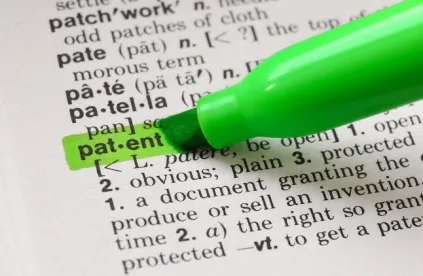The U.S. Supreme Court issued a 6-3 decision on June 10, 2019 holding that the Government was not a “person” capable of instituting one of the three AIA patent review proceeding described below. This holding overturned a prior decision by Court of Appeals for the Federal Circuit (Federal Circuit) in favor of the United States Postal Service (USPS) that the Government was a “person” eligible to petition for a covered business method (CBM) review.
Writing for the Majority, Justice Sotomayer explained that in the post-AIA world, a patent can be reexamined either in federal court during a defense to an infringement action, in an ex parte reexamination by the Patent Office, or in the suite of three post-issuance review proceedings before the Board. Proceeding from a presumption that the Government is not a “person” authorized to initiate these proceedings absent an affirmative showing to the contrary, Justice Sotomayer explained that under the AIA, only “a person” other than the patent owner may challenge the post-issuance validity of a patent under: (i) “inter partes review,” (ii) “post-grant review,” or (iii) CBM review. The AIA does not define the term “person.” Citing prior precedent, the Majority stated that in the absence of an express definition for the term “person” it applied a “longstanding interpretive presumption that ‘person’ does not include the sovereign,” and thus “excluded a federal agency” like the USPS. The Majority further noted that this presumption reflected “common usage” and it was also reinforced by the 1947 Dictionary Act, which provided the definition of “person” for courts to use “[i]n determining the meaning of any Act of Congress, unless the context indicates otherwise.” Notably, the Government is absent from the definition of “person[s]” defined by the Dictionary Act.
In response, The USPS initially argued that the AIA reference to a “person” in the context of post-issuance review proceedings must include the Government because “other references to persons in the patent statues appear to do so.” This argument is referred to as the consistent-usage-principal. In support of consistent-usage-principal arguments, the USPS relied inter alia on (i) §207(a)(1), which authorizes “[e]ach [f]ederal agency” to “apply for, obtain, and maintain patents or other forms of protection . . . on inventions in which the Federal Government owns a right, title, or interest” and the “intervening rights” provisions that offer certain protections for “any person ”who is lawfully making or using an invention when the Patent Office modifies an existing patent claim in a way that deems the person’s (previously lawful) use to be infringement. The Majority rejected this argument because this principle “readily yields to context,” especially when a statutory term is used throughout a statute and takes on “distinct character[istic]s” in distinct statutory provisions. The Majority identified at least 18 references to “person” in the AIA and Patent Act (patent statutes) in which the term is used in a conflicting way with no clear trend. The Majority noted that the consistent-usage principal breaks down in circumstances, such as here, where Congress uses the same word in a statute in multiple conflicting ways. The Majority further noted that the mere existence of Government-Inclusive references in parts of the patent statutes fails to make an affirmative showing required to rebut the presumption that the Government is not a “person” eligible to petition for AIA review proceedings.
The USPS then argued that because federal officers were able to apply for patents in the name of the United States Government since 1883, Congress must have intended to allow the Government access to AIA review proceedings. The Majority found this argument unpersuasive because the Government’s ability to obtain a patent does not suggest that Congress meant for the Government to participate as a third-party challenger in recently established AIA proceedings. The USPS also argued that the Patent Office since 1981 has treated federal agencies as “persons” who may cite prior art to the agency or request an ex parte reexamination of an issued patent. The Majority rejected this argument as irrelevant because of the distinctions between a hands-off ex parte reexamination (where the challenger is not permitted to participate in the Patent Office’s process) and an inter partes review (which is adversarial, adjudicatory proceedings between the “person” who petitioned for review and the patent owner). The Majority also noted that Congress may have good reasons for authorizing the Government involvement in an ex parte reexamination and not in an inter partes review, such as the Government’s unique position among alleged infringers given that 28 U. S. C. §1498 limits patent owners to bench trials before the Court of Federal Claims and monetary damages, whereas 35 U. S. C. §271 permits patent owners to demand jury trials in the federal district courts and seek other types of relief.
Finally, the USPS argued that that it must be a “person” who may petition for AIA review proceedings because, like other potential infringers, it is subject to civil liability and can assert a defense of patent invalidity. The USPS explained that it would be unusual to deny it the ability “to challenge a patent de novo before the Patent Office,” while permitting it to challenge a patent only with clear and convincing evidence in defense to an infringement suit.” In response, the Majority stated that because Federal agencies face “lower and more calculable risks” than nongovernmental actors, it is reasonable for Congress to have treated them differently.
The Dissent, relying on §207 and the historical argument by USPS, argued that the presumption that the term “person” excluded the Government was overcome by the purpose, subject matter, context and legislative history of the patent statues, which indicated that Congress intended the term “person” to include the Government. The Dissent also argued that the USPS should be allowed to petition for post-issuance review proceedings because its participation would further the purpose of the AIA: to provide a cost-effective and efficient alternative to litigation in the courts.
This decision reduces the number of options available to the Government to challenge the validity of an issued patent. It is conceivable that in the future, Congress may remedy this deficiency with minor amendments to the post-issuance review provisions of the AIA.




 />i
/>i

